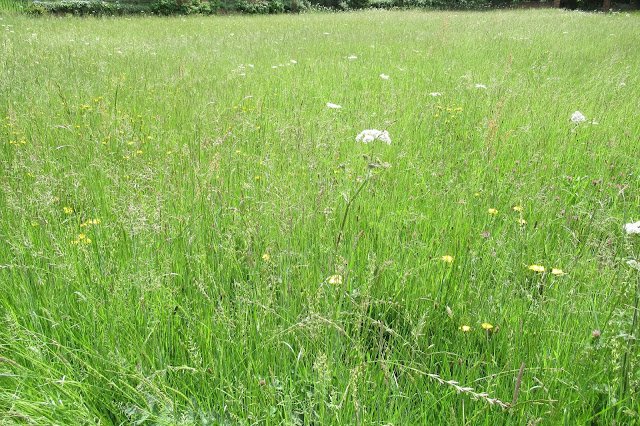On our way to Packwood, across the road from the house,
we came across this ancient meadow which was a delight.
We then continued on our way and entered the courtyard of the main house.
Through another gate and we were in the gardens.

We headed straight for the sunken garden which has a pond in the middle.
and lots of planting on the sides.
The water lilies in the pond were just about to flower
while the borders were a riot of colour
In one corner we spotted this oven which originally heated the wall to keep late frosts off the fruit trees trained on it.
We moved on to the back of the house
and the tail end of the orchard. Packwood grounds are an interesting combination of the wild and the cultivated - so much of it is left to grow naturally so that meadows happily co-exist with highly cultivated areas.
The lakeside walk was pleasant
but we soon took and diversion - we had seen a sign for an art installation and decided to go and explore
We soon reached the Prospect Room, designed by Catherine Aitken and David Murphy
and soon entered the woods
and eventually reached the buttercup meadow
with the odd lily planted in its midst. This is a recent meadow, established in 2003 and is still developing.
We had a good view of the yew garden from here, which was our next destination

people dwarfed by the huge yews
This yew garden is considered one of Britain's major topiary gardens. It has evolved into its present appearance over the last 350 years. The area started life as an orchard, with the largest yews and undulating box hedging dating from the 1600s. The legend of Packwood's yews symbolising the Sermon on the Mount was first recorded in the Victorian period. The area took on its present character in the early 1900s when the last remnants of fruit trees growing amongst the yews were cleared away.
We left the yew garden and moved on to the raised terrace

which afforded good views of the house.
The planting here is delightful
with iris predominating.
We entered one of the four late 17th century pavilions that guard the points of the compass in the Carolean Garden which were designed as prospect rooms, summer houses and banqueting houses. The banquet was the part of a formal dinner where, at the end of the meal, ladies and gentlemen would desert the dining table to enjoy sweet and alcoholic foods away from the dining room.
A last look at some more iris, and then it was time to go home.

































No comments:
Post a Comment